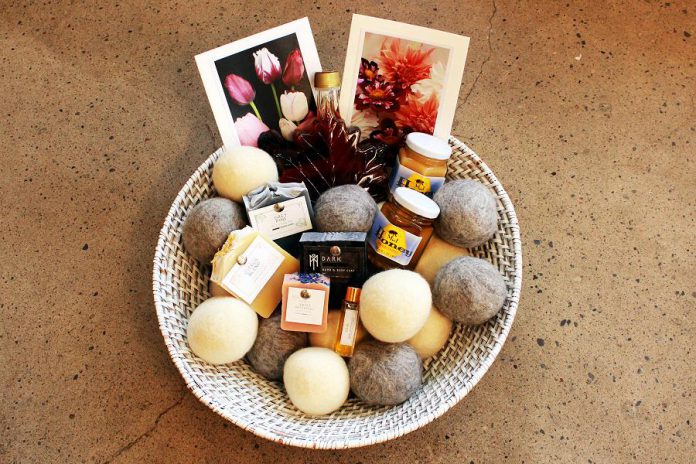
Did you know that the idea of Valentine’s Day as a celebration of romantic love originates with a poem written in 1382?
Geoffrey Chaucer’s “Parliament of Fowls” describes a gathering of birds on Valentine’s Day. Three male birds make passionate speeches — including appeals to cosmic and political order and insults — in order to win the affections of one female bird. None succeed.
That does not seem like a promising start to us.
We think everyone would be better off if we all celebrated Valentine’s Day without such a narrow focus on romantic love. With that in mind, we gathered some fun facts, unfortunate realities, and alternatives that would make Valentine’s Day more sustainable and loving.
Love and money
Valentine’s Day is big business.
According to the 2016 Census, roughly 57 per cent of Canadians over the age of 15 identified as living as a couple in a private household. Not everyone in a romantic relationship is included in that figure, but it is clear that the majority of our population is likely to participate in Valentine’s Day. Canadians spend approximately $37 million on Valentine’s Day each year.
The most common Valentine’s Day gifts include cards, chocolates, and flowers. Let’s take a look at how each of these items has grown in popularity and what alternatives could reduce negative environmental and social impacts.
Cards
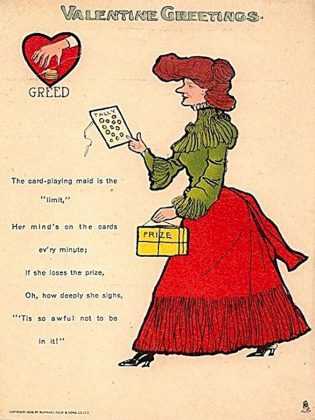
Valentine’s cards first became popular in 19th century England. In 1841, only a year after the invention of the postage stamp, the number of Valentine’s cards exploded from approximately 60,000 to some 400,000.
Valentine’s cards are second only to Christmas cards in their popularity and, like early mass-produced Christmas cards, these Valentine’s cards were assembled in factories that employed women or girls. We discussed the environmental impact of Christmas cards in an article last fall. Similar information applies to Valentine’s cards.
Studies of the environmental impact of the greeting card industry in Canada are not readily available, but a recent study by Exeter University in the UK showed that sending one card produces about 140 grams of carbon dioxide. With nearly two billion cards sold annually in the UK, that carbon footprint is roughly equivalent to manufacturing 10,000 cars per year.
One thing to keep in mind is that adornments like shiny or glossy materials, music players, glitter, metallic ink, or metal charms must be removed before the card can go in the recycling bin.
Unfortunately, glitter and music players contribute to plastic pollution globally.
Lower-impact alternatives to mass-produced cards include making your own cards out of recyclable or biodegradable materials, or trying e-cards.
Chocolate
Chocolate is another popular gift at Valentine’s Day. Chocolate is created by processing the beans found within large fruit pods that grow on cocoa trees.
The cocoa tree is native to the tropical regions of south and central America. However, approximately two-thirds of the world’s cocoa is now produced in West Africa, often using child labour.
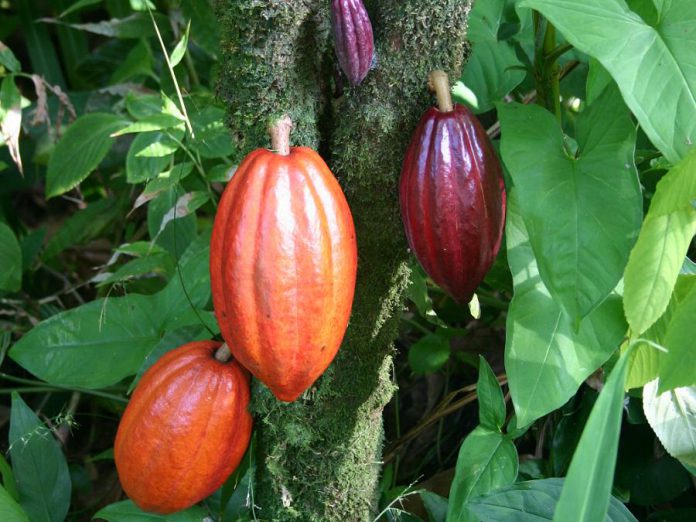
Conscious consumerism is important if you plan to gift chocolate this Valentine’s Day. Look for fair trade chocolate products that respect basic human rights and care for the growers and workers on cocoa farms.
Learn more and consult the list of registered brands and companies at fairtrade.ca/cocoa.
Also consider asking our talented local chocolatiers here in Peterborough if their chocolate and sugar are sourced from fair trade sources. Buying local can reduce the environmental impacts of shipping — especially if you find a chocolatier who uses recyclable or biodegradable packaging.
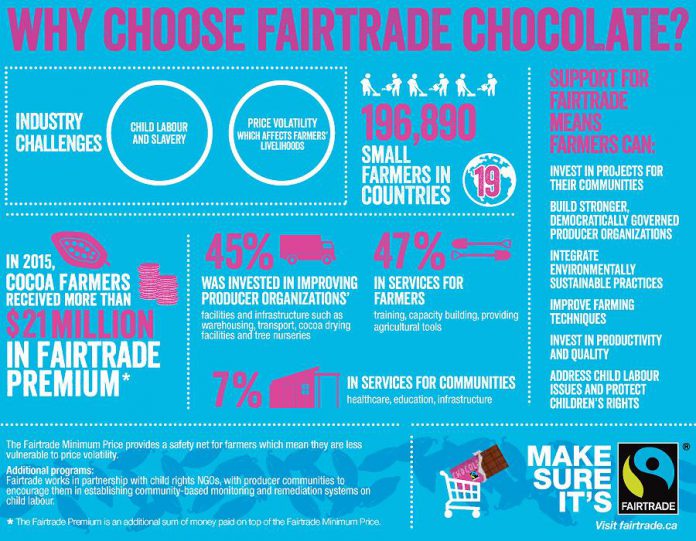
Flowers
Cut flowers are an iconic Valentine’s Day gift. On average, a dozen long-stemmed red roses will set you back $80 for Valentine’s Day. That is about 30 per cent more than any other time of year. Increased demand and limited supply drive prices up for Valentine’s Day.
Cut flowers have a particularly negative impact on vulnerable groups and the environment. In 2017, Stats Canada reported that 12.4 million cut roses and rose buds were imported into Canada with a total value of $76.1 million. Most of these flowers are produced in Colombia and Ecuador, and many contribute to unethical working conditions and unsustainable water use.
Data from a 2009 study from the International Labor Rights Forum shows that about 60 per cent of flower farm workers are female. Of these female workers, 55 per cent have been victims of sexual harassment and the aggressors are rarely punished.
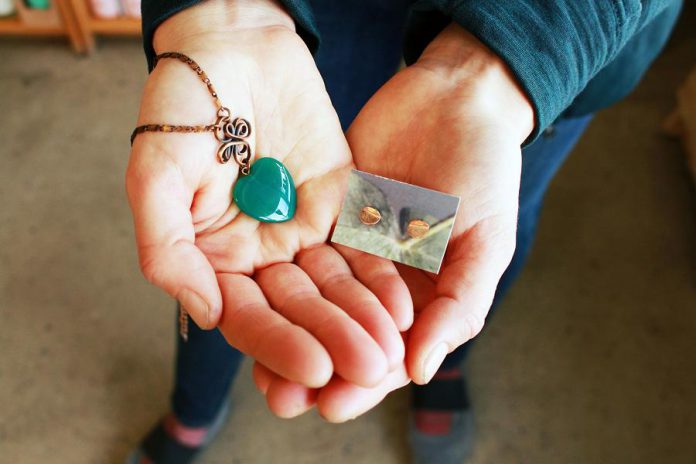
Heavy use of pesticides results in approximately two-thirds of these flower workers suffering from health problems ranging from impaired vision to congenital malformations and neurological ailments. In some cases, it has been reported that workers must take pregnancy tests, and those who are found to be pregnant are either fired or not hired in the first place.
You can use fairtrade.ca/flowers as a resource to find sources for flowers that support more equitable working conditions.
You can also consider potted plants that have been grown sustainably in Canada or, even better, relatively close to Peterborough. Planning ahead and harvesting a dried bouquet of native flowers from your garden in the early fall can make for a low-impact, thoughtfully arranged gift that lasts longer than cut roses.
The pressure to give gifts at Valentine’s Day can have detrimental impacts on the environment and on social conditions around the world. When considering your loved ones and your expressions of love for them, also think about where various products come from, how they were produced, and how workers are treated.
Here at GreenUP, we also encourage you to support locally made products. Even better, consider expressing your love through your own creativity: perhaps write a poem or letter, make a handmade card, or bake some treats.


























